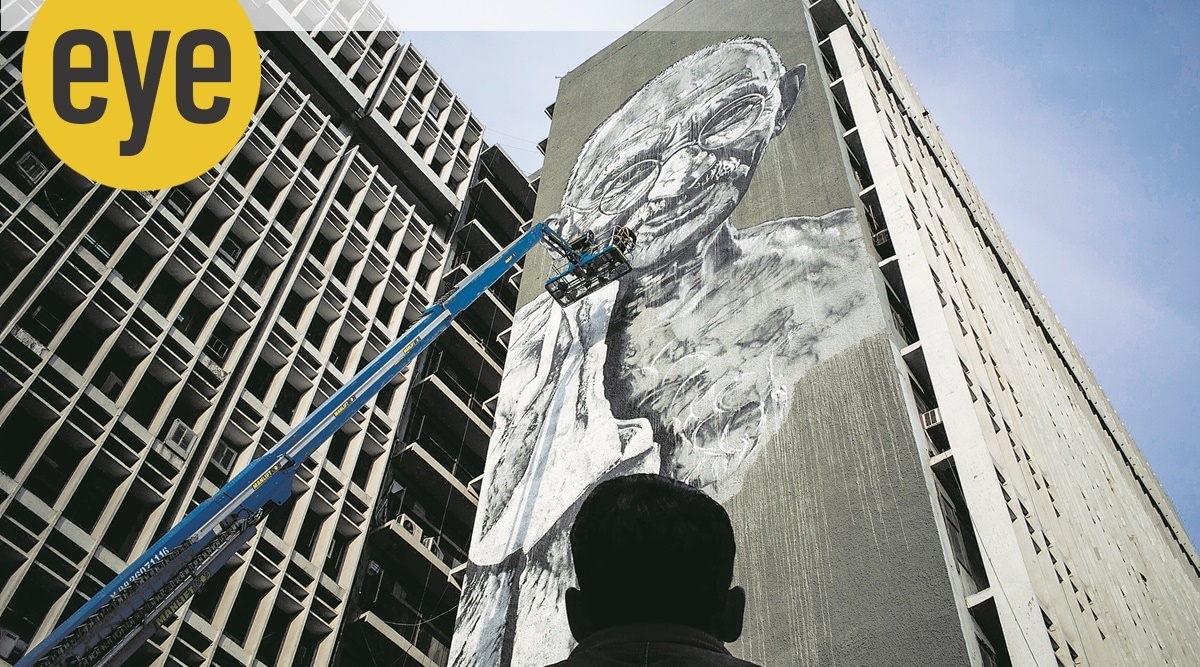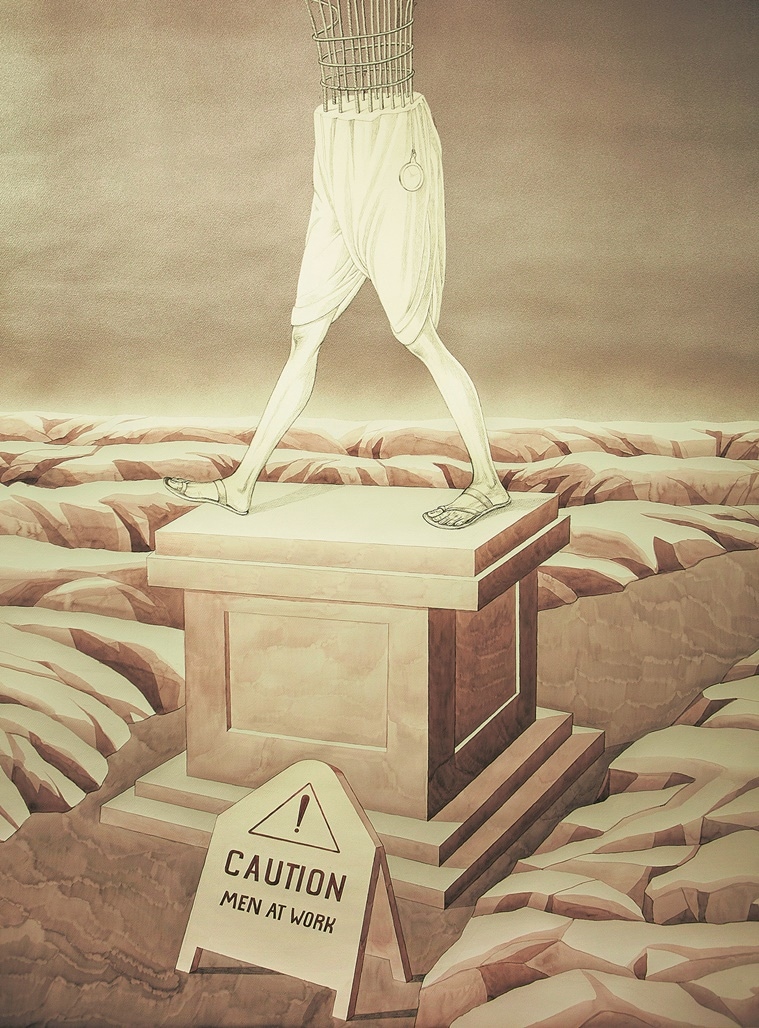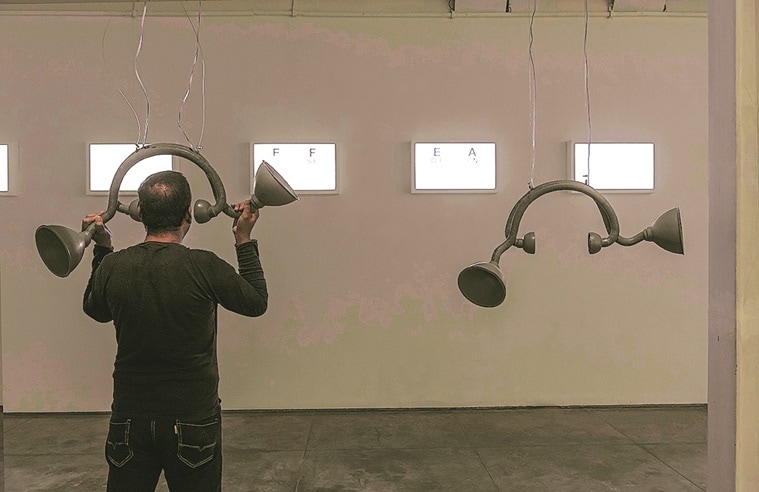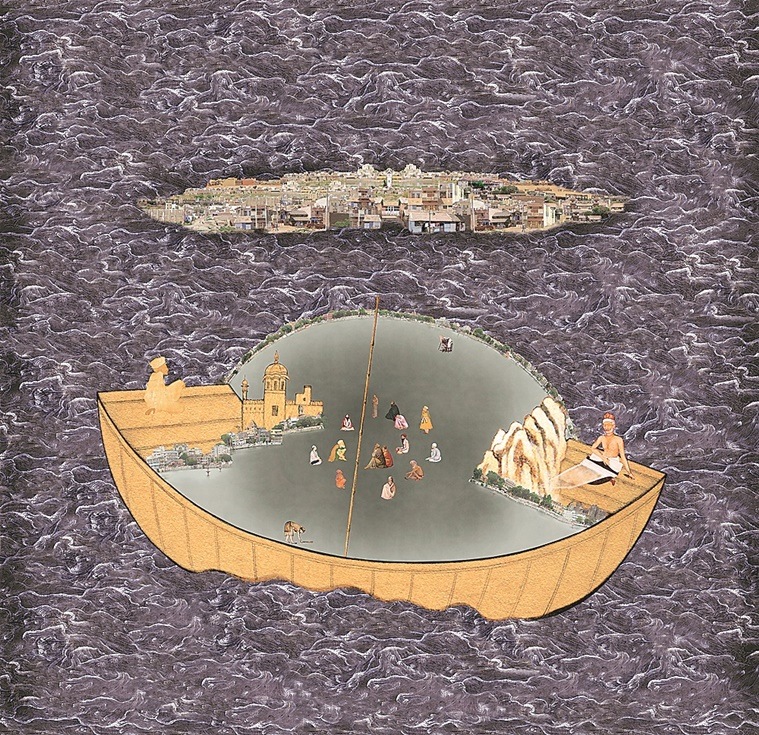 Gandhi’s mural on the Delhi Police Headquarters, painted in 2014 by German graffiti artist Hendrik Beikirch. (Photo: Enrico Fabian)
Gandhi’s mural on the Delhi Police Headquarters, painted in 2014 by German graffiti artist Hendrik Beikirch. (Photo: Enrico Fabian)Thinking of Gandhiji today leaves you in a state of despair, as the voices of sanity and civilised conduct in our public life have been pushed into the margins, if not extinguished. We watch with utter disbelief how aggression and violence govern every walk of our life, how every form of dissent is muzzled, how freedom continues to be curtailed, leaving the civilised populace in a helpless limbo. Let’s not forget that Gandhiji practised a humane behaviour in his public and private life, listened to those who often reviled him, upholding their right to differ with respect and humility.
His absence is sorely missed in this world that has turned increasingly violent. I’ve often turned to Gandhiji in my work. I quoted him in a dialogue with Kabir, with both at opposite ends of an ark floating in an endless ocean. His Satyagraha and Ours (2006) show Gandhiji as a young lawyer before he returned to India from in South Africa. In the triptych Gandhi and Gama (2014), Vasco da Gama faces a young Gandhi contemplating the collapse of the British rule across a mappa mundi.
Gigi Scaria
 Scaria’s Men at Work (2015)
Scaria’s Men at Work (2015)
When I think about Mahatma Gandhi in 2020, my heart bleeds so much from the permanent wound inflicted by the intense communal politics played out in this country that it will never recover. Gandhi, through his life and actions, analysed the idea of ‘truth’ in a diversely religious, ethnic, cultural, philosophical and political core of this land. His vision was based on democratic principles. What have we become? For us, the truth has become a myth.
We have systematically removed each and every stone laid by the Mahatma. This is a country where women are being raped and killed, migrant workers are a non-existing entity and a historical monument of religious importance is crushed to the ground. We have created our banana republic, one where we shouldn’t utter the Mahatma’s name.
Reena Kallat
 Blind Spots (2017-19) at the Iris Dreams/Reena Kallat Studio and Chemould Prescott Road.
Blind Spots (2017-19) at the Iris Dreams/Reena Kallat Studio and Chemould Prescott Road.
The world over, democracies are under increasing strain, facing new challenges. It becomes more urgent for us to revisit Gandhi’s ideals – of tolerance, truth, equality, justice. In this multi-channelled video installation Blind Spots, viewers encounter 13 pairs of Snellen eye charts through the disjointed letters that form the preambles to the constitutions of countries such as US-Cuba, Serbia-Croatia, Sudan-South Sudan, India-Pakistan, Bangladesh-India, North and South Korea, amongst others.
In the act of reading, as the founding promises of equality, justice, liberty, common to preambles of both nation-states are revealed, they morph into braille-like dots. The work invites reflection on how we seem to have lost sight of these shared human values and universal aspirations, which cut across the idea of sovereign nation-states.
 watercolour and automotive paint on paper; Sheikh’s The Ark (2007),
watercolour and automotive paint on paper; Sheikh’s The Ark (2007),
Anpu Varkey
In this time of strife and unrest around the world, Gandhi the pacifist — who stands tall on the exteriors of government buildings that uphold the law — and his views of negating violence as a means to subdue conflicts are even more relevant now.
As told to Vandana Kalra
📣 The Indian Express is now on Telegram. Click here to join our channel (@indianexpress) and stay updated with the latest headlines
For all the latest Eye News, download Indian Express App.